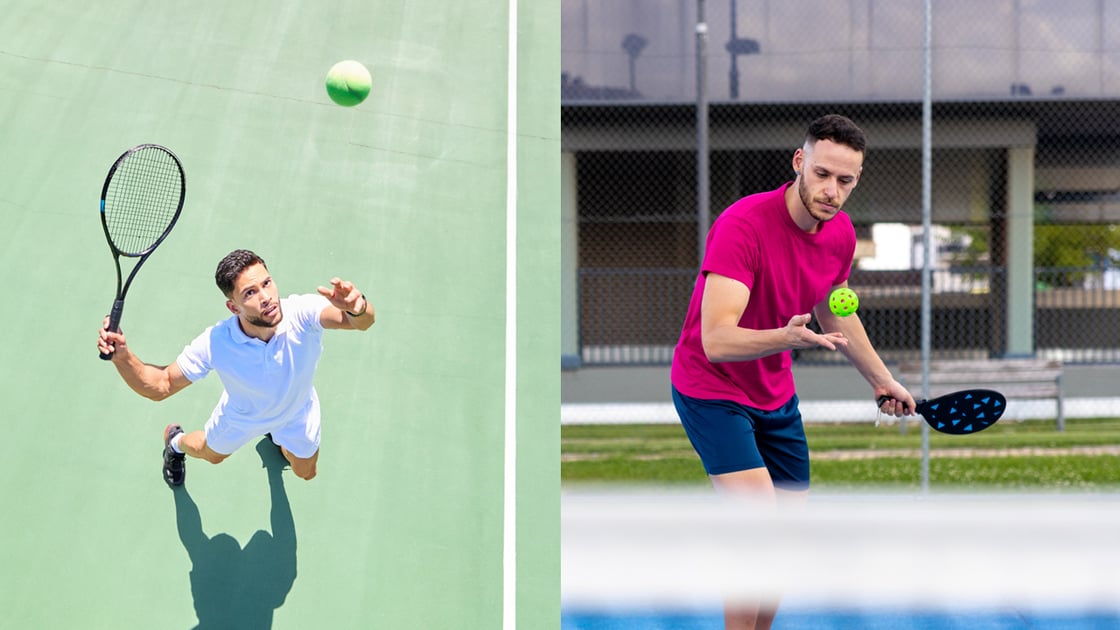How many times have we heard people say they’ll eventually play pickleball? When they decide to retire from tennis.
Don’t be fooled tennis players - transitioning from tennis to pickleball might seem straightforward for some, but it's important to note that the two sports have distinct differences in terms of rules, court size, and playing techniques.
More and more tennis players are expressing an interest in trying pickleball, but successfully adapting to the new sport can vary from person to person.
The ease or difficulty of the transition depends on an individual's familiarity with racket sports, their physical fitness, and how quickly they can adjust to the nuances of pickleball.
Some tennis players may find the switch relatively easy due to their existing skills and fitness, while others might encounter challenges in adapting to the shorter court, the faster pace, and the requirement for quick reflexes and volleys in pickleball.
It's essential to keep in mind that transitioning from one sport to another, even if they share some similarities, often requires time and practice to become proficient.
Let's talk about it...

Non-Volley Zone
Volleys are fundamental to pickleball and the entire basis of the game is focused around the non-volley zone, which does not exist in tennis.
This zone is what makes the sport so unique and all four (or two) players are neutral amongst one another.
Everyone must follow the rules around the NVZ, so the only variance between players is their physical reach, but while taller people can reach over the NVZ easier a shorter person has a lower and more stable center of gravity which is beneficial in a multitude of ways.
Tennis players get so caught up in volleying that they often forget this zone and are committing foot faults by stepping into the zone to volley.
An observation that I’ve made over time with converting tennis players is that ‘they’ will step into the shot, or towards the ball, which has them stepping into the NVZ.
But in pickleball the approach to hitting a volley is more of a lateral step - which still allows you to transfer weight from one foot to the next, providing the additional strength and stability required for a solid volley.
This approach will keep you out of trouble.
.jpg?upscale=true&upscale=true&width=1120&height=746&name=shutterstock_2279926619%20(1).jpg)
The Ball
Here’s the thing about a plastic ball with holes that weighs less than 1 ounce. It just doesn’t bounce. So, moving to the ball is crucial for maintaining a rally.
In tennis, players become accustomed to waiting for the ball to get to them, this grounds them to the floor, and are unprepared for the ball not rising off of the bounce. I’ve seen many tennis players struggling to read the bounce of the ball.
Some tips for those players are to implement a consistent split step and to use smaller, quicker footwork.
A consistent split step will keep a player ready to move in any direction necessary and a low center of gravity combined with smaller steps will keep a player balanced and more controlled.
.jpg?upscale=true&upscale=true&width=1120&height=746&name=shutterstock_1997035580%20(2).jpg)
Image credit: The Art of Pickleball
Paddle Not Racquet
There are no strings on a pickleball paddle so how can it be a racquet? A pickleball paddle is more similar to a table tennis paddle than a tennis racquet.
The paddle is a different shape, weight and significantly smaller too, so to think you have the same reach with a paddle is going to completely throw off the distance you create from the ball and the timing to make contact with the ball.
Because rallies in pickleball are faster and shorter than in tennis, the strokes that are required are short and rapid, whereas a tennis racquet is designed to accommodate longer groundstrokes that have to travel a further distance.
In my opinion, there is a significant amount of technology that goes into a tennis racquet versus a pickleball paddle, although manufacturers are constantly staying innovative in improving the performance of a paddle.
I learned pickleball using a wooden paddle and am now using a raw carbon fiber-faced paddle. It will be interesting to see how companies will impact the sport by staying inventive.
There are many other differences between the two sports, some quite obvious such as court size, scoring, style of play, and strategies.
Or that the entry to pickleball is lower and easier. But, an area that I really think makes the biggest difference between the two sports is that pickleball is so fun.
It creates a culture amongst players that is almost immediate and very social.
I’m not sure if it’s because tennis is played one vs one most of the time or that the environment of a tennis facility is to be quiet and not disruptive but pickleball is loud and people don’t hold back expressing themselves on and off of the court.